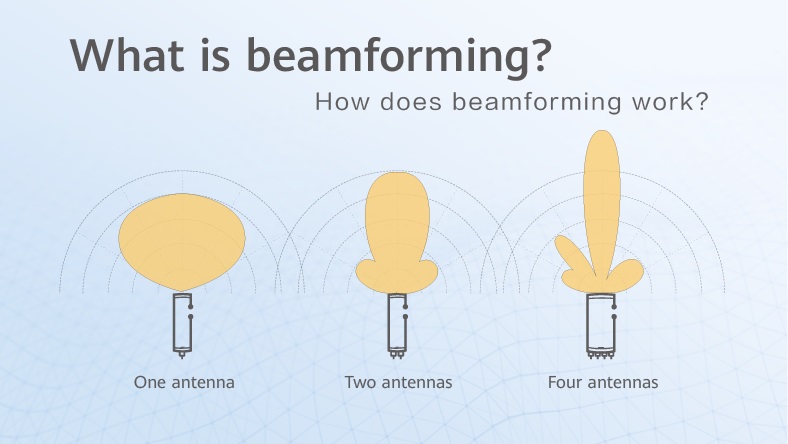What is Beamforming and How Does It Make Wireless Better?
Beamforming is basically a type of radio frequency management. In this, a wireless signal gets directed to a device that is receiving signals. Wireless communications and acoustics are some examples of technologies to which beamforming can be applied. It uses multiple antennas to send out the same single towards the device that is receiving, for instance, laptops, computers, tablets, etc. The connection that it forms results in a reliable WiFi data transfer. Do you want to know more about what is beamforming? Well then, continue reading this post and learn about how beamforming works and if it makes wireless better or not.
How Does Beamforming Work?
Depending on its type, beamforming works differently. And according to the need, a beamforming tower adjusts the signals while sending them. The adjustment makes sure that the best path is being formed for the signals to reach the device.
Here are some of the beamforming techniques that you should become aware of now that you know what is beamforming:
- Digital Beamforming
This type of beamforming has different signals for every antenna. Receivers that are digital are kept at places that are radiating the elements of every antenna. In order to ensure that digital beamforming is flexible, different phases are applied to different frequency bands.
- Analog Beamforming
Analog beamforming is known to make use of phase shifters in order to send the signal from a number of antennas at the same time. The antenna pattern is set in such a way that it points in a specific direction. Apart from that, the signal phases of signals are adjusted in an RD domain.
- Hybrid Beamforming
As the name suggests, a hybrid is a combination of two. In this case, hybrid beamforming is a combo of analog beamforming as well as digital beamforming. In this approach, both types of beamforming are used that support multi-stream transmission. This entire process permits some frequency variations.
Now that you know how beamforming works, hop on to the next section in order to find out what is beamforming because of its advantages.
What are the Topmost Benefits of Beamforming?
Mentioned below are the top 5 benefits ofbeamforming:
- In the direction of the specified direction of beam, more power is given.
- The information transfers are much faster.
- There is no signal interference. The reason being, signals only broadcast when it’s needed.
- Higher signal quality reaches the device that is currently receiving.
- Analog beamforming can be implemented in a much simple manner.
With that, you have become aware of the topmost benefits of beamforming. Now, it’s time to know about its current limitations as well. Continue reading this post.
What are the Limitations of Beamforming?
Walk through the below-mentioned carefully and you will find your brain equipped with the current limitations of beamforming:
- The biggest limit of beamforming is that its costs tend to be higher. And when we say, higher, we mean, much higher than traditional systems.
- The digital as well as massive MIMO beamforming systems are more complicated.
- At times, beamforming requires more computing resources and power.
What to Consider While Implementing Beamforming?
There are a number of factors that you need to consider when you are thinking about implementing beamforming. We have highlighted them below:
- Digital beamforming needs transceivers for each antenna. This means that the cost of power consumption will go from zero to a hundred.
- High frequencies are very costly.
- Antenna’s performance, as well as their characteristics, should be considered with a lot of care as there is a high chance that they will affect performance.
- Routers or other consumer-facing products can be expensive If you want an accurate figure, then know that they can range from $90 to $350.
Beamforming Technology Future: What is it?
The technology of beamforming has the potential to become much more common in WiFi than it already is. Apart from that, it will become a much-needed technology to help communication meet the future requirements of data.
The Bottom Line
With that, we are wrapping up our guide on what is beamforming and how exactly it makes wireless better. We hope that you liked walking through this post. Do you want to stay updated with similar technologies? Well then, it is recommended that you visit this website every third day. You will always find something new to explore in the market.




